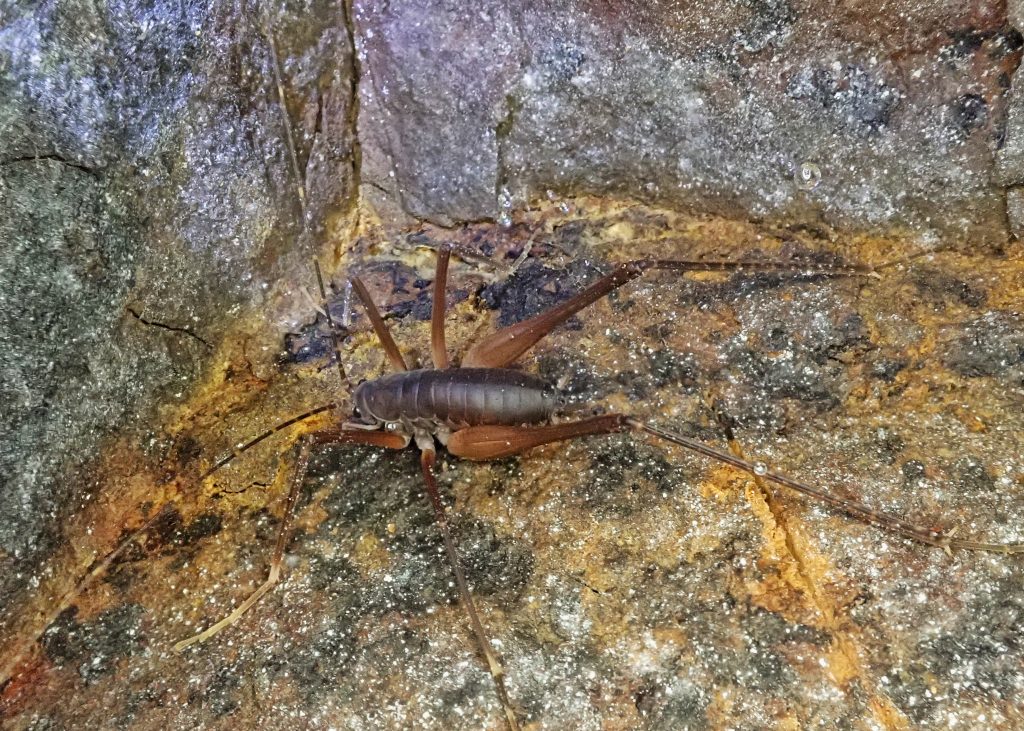
Last Saturday, based on a tip from social media, my friend Craig Sondergaard and I mounted an expedition to the Capitol Forest, sw of Olympia,Washington, in search of Square-legged Camel Crickets. Our destination was an abandoned mine alongside a small stream, where our informant had found several of these long legged (up to 8” legspan), and long antennaed (up to twice their body length) members of the family Rhaphidophoridae (camel or cave crickets). An interesting note about camel crickets is that they do not ‘sing’. Unlike most crickets, camel crickets lack wings, or other stridulating organs with which to chirp.
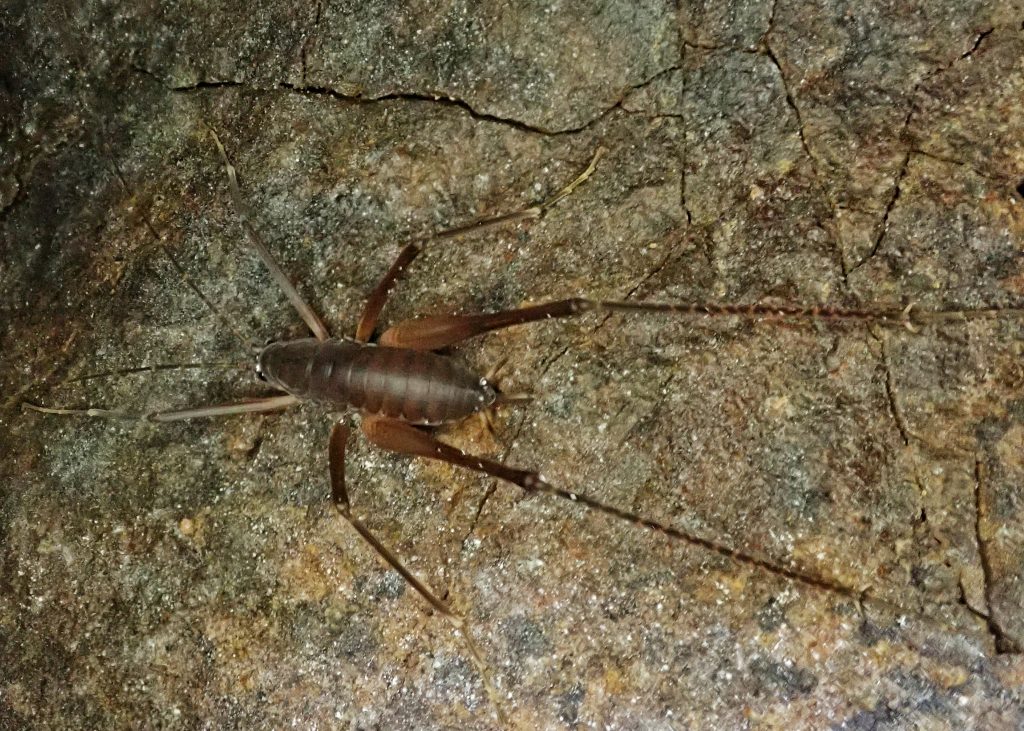
When Craig arrived I, of course, wasn’t ready to go, since he thoughtlessly showed up on time, but we were northbound by 8:30am. The rain and low clouds made for poor sightseeing, but we had plenty to talk about, and the I-5 corridor isn’t particularly scenic on the best days. By 10:30 we were at the designated pullout. We geared up for the increasing rainfall, whilst the sounds of a pitched battle emanated from the shooting range across the street, and I discovered that I had, in my rush, mistakenly brought the wrong headlamp for the batteries I had grabbed. I finally forgave Craig for his rudeness in being on time when he said he had an extra headlamp, which I borrowed, and we set off.
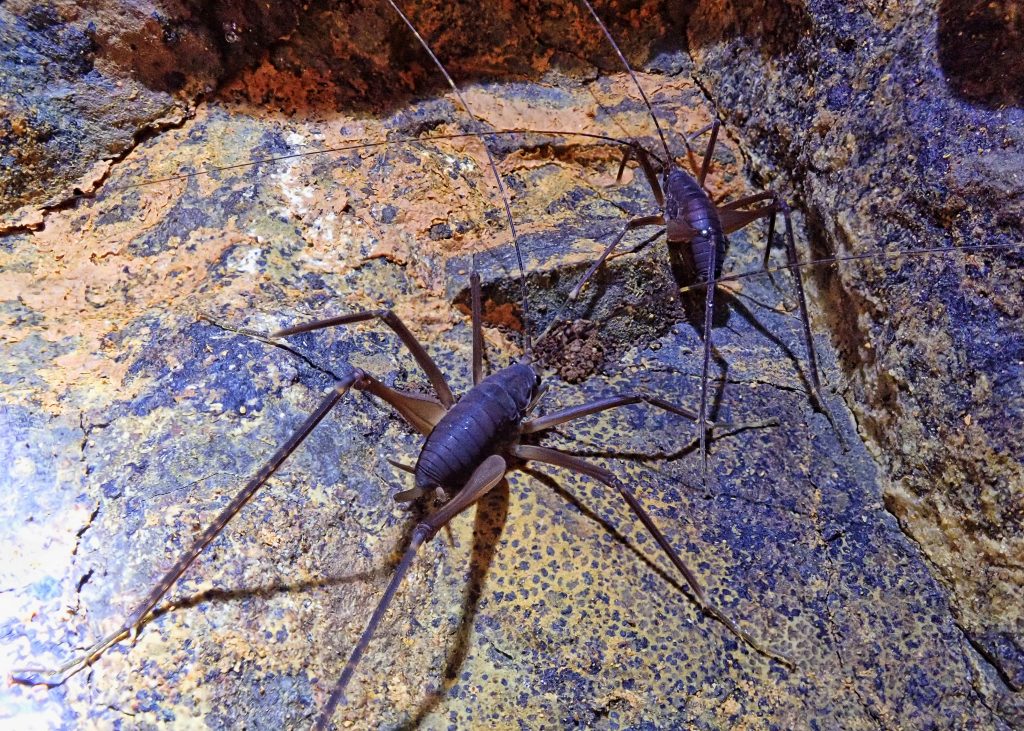
The directions turned out to be exact, except for our (and by our I mean mine, since we were so close to the truck that Craig was still adjusting his pack straps) interpretation of the directional idiom, relative to the trail junction, that ‘you can’t miss it’. The area was much cut by broad ATV trails, and I walked right by the small footpath, barely more than a deer trail, which didn’t come close to matching my search image of a maintained trail. A few false starts, a veer to the right at an unlikely fork, and a strong uphill mile later, with occasional pauses to let mud splattered riders and their ATVs roar past us, we encountered yet another fork, and I acquiesced to Craig’s belief that we were off track.
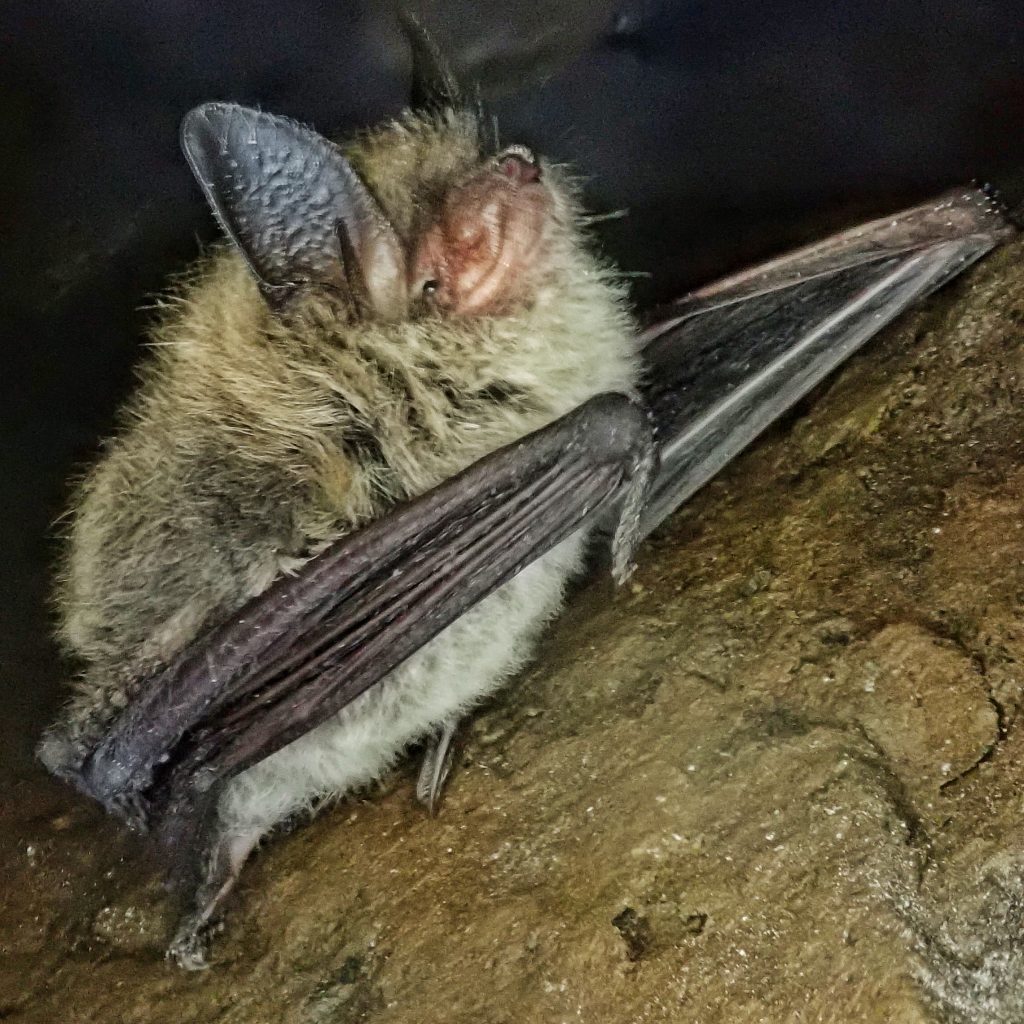
Despite the noisy recreational purposes to which it was being put it was a beautiful forest in which to walk, with mature, second growth, mixed conifers and patches of deciduous trees, the evergreen foliage of salal and Oregon grape, masses of sword ferns interspersed with lady ferns and Bracken ferns, and many shades of moss and lichen cloaking every suitable surface. There even seemed to be a relative absence of non-native plants, except in the splash zones of the ATV trails, and the bulk of the berry canes we saw were the native dewberry.
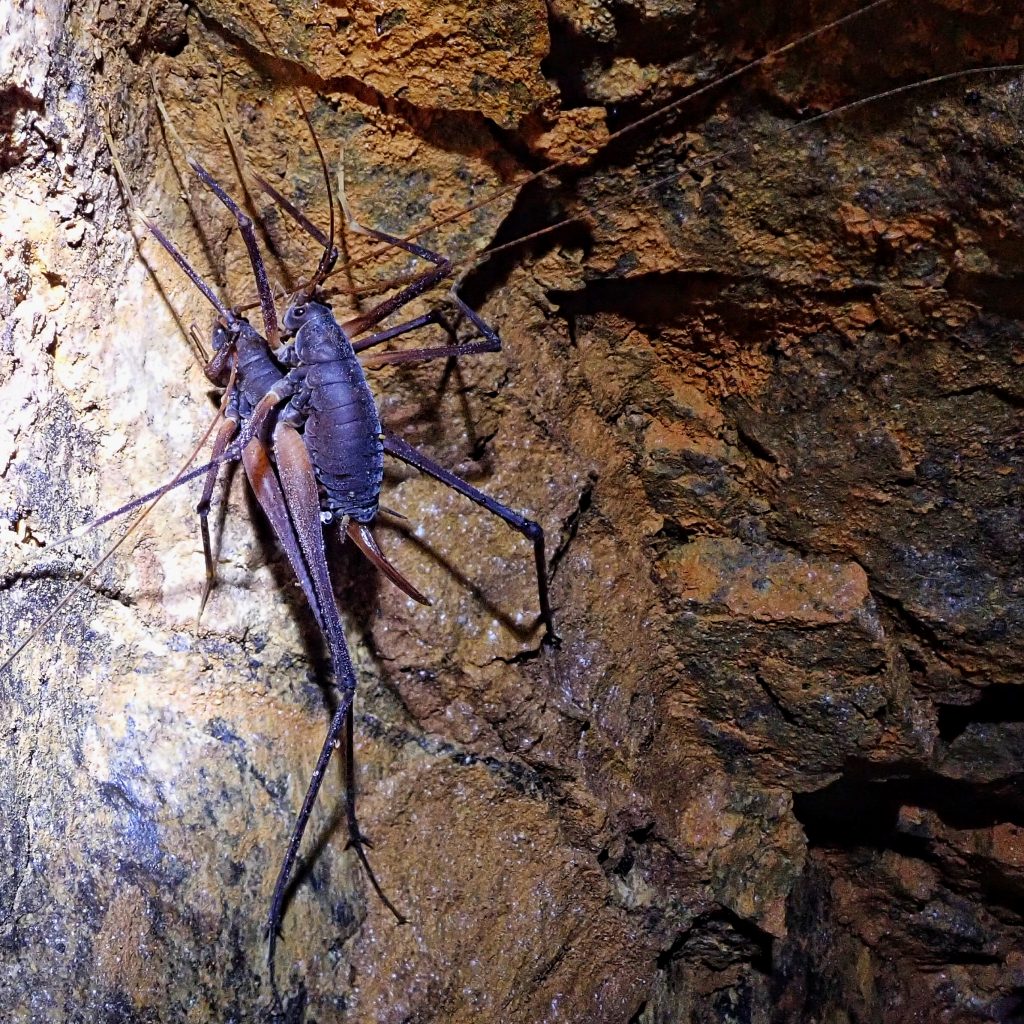
By the time we were back within sight of the truck, and found the right right turn, the cartilage-free zones of Craig’s knees were barking like junkyard dogs along the route of a volksmarch. So, while he went to recuperate, I wandered off to find the mine. The trail, while certainly not something that ever got official attention, also clearly had seen use, and I had no problem following its course as it paralleled the stream. And, just after passing the 5 minute mark indicated by the directions, there was the hole in the hillside I had seen in the photos that sent us off on this adventure.
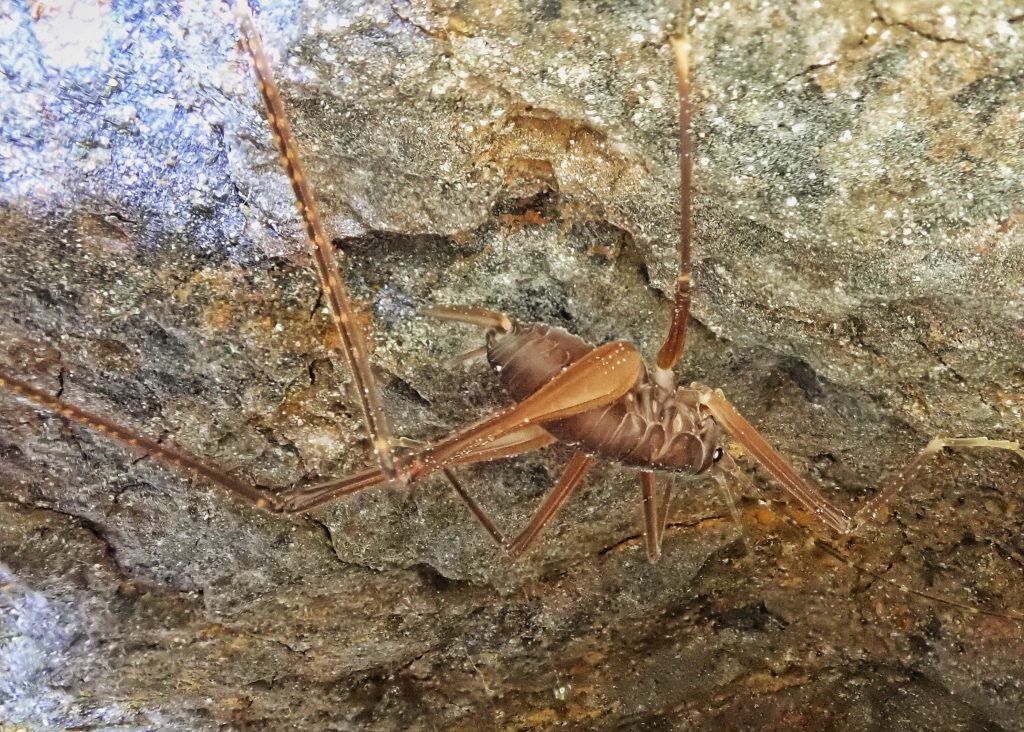
The entrance to the mine was small, and I had to shrug off my pack and get on hands and knees to enter. But, once through the narrow opening, I was able to stand upright. I switched on the headlamp and started scanning the surprisingly solid rock surrounding me, and within 30 seconds found my first Tropidischia xanthostoma! And then another, and a pair, and another pair seemingly in copulo. I was a very happy man, and started snapping pictures like crazy! The body of the largest was probably 20-25mm, not really that big for an Orthopteran, but those crazy long legs and antenna really made them look huge. I’ve read they are capable of impressive leaps, and I can believe it with those powerful legs! And that massive, scythe-like ovipositor, close to half the length of the body of the mature female, only added to the primordial vibe of these creatures, although they are utterly harmless. The photos really don’t do them justice, partly because I should have added something for scale, and partly because I couldn’t be very close and still get all of the legs and antenna in the shot. Although I could have gotten the camera very close because they were very docile and seemed unperturbed by my light or presence.
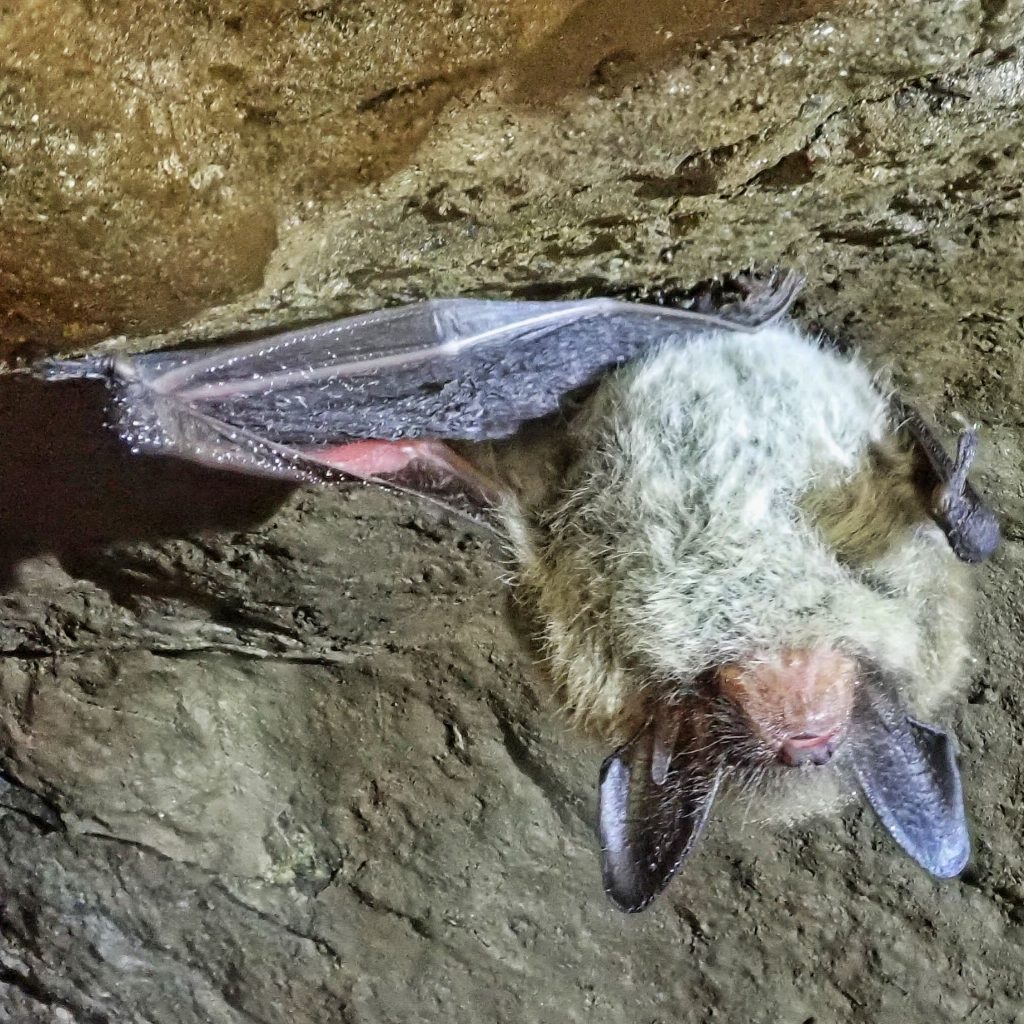
I was too excited to keep exploring because I had to go tell Craig I’d found the camel crickets. I emerged from the mine to the snarl of small engines and the sharp cracks of a firefight, but it no longer bothered me in the same way. Back at the truck Craig had recovered enough to give it a go, and we headed out for round two.
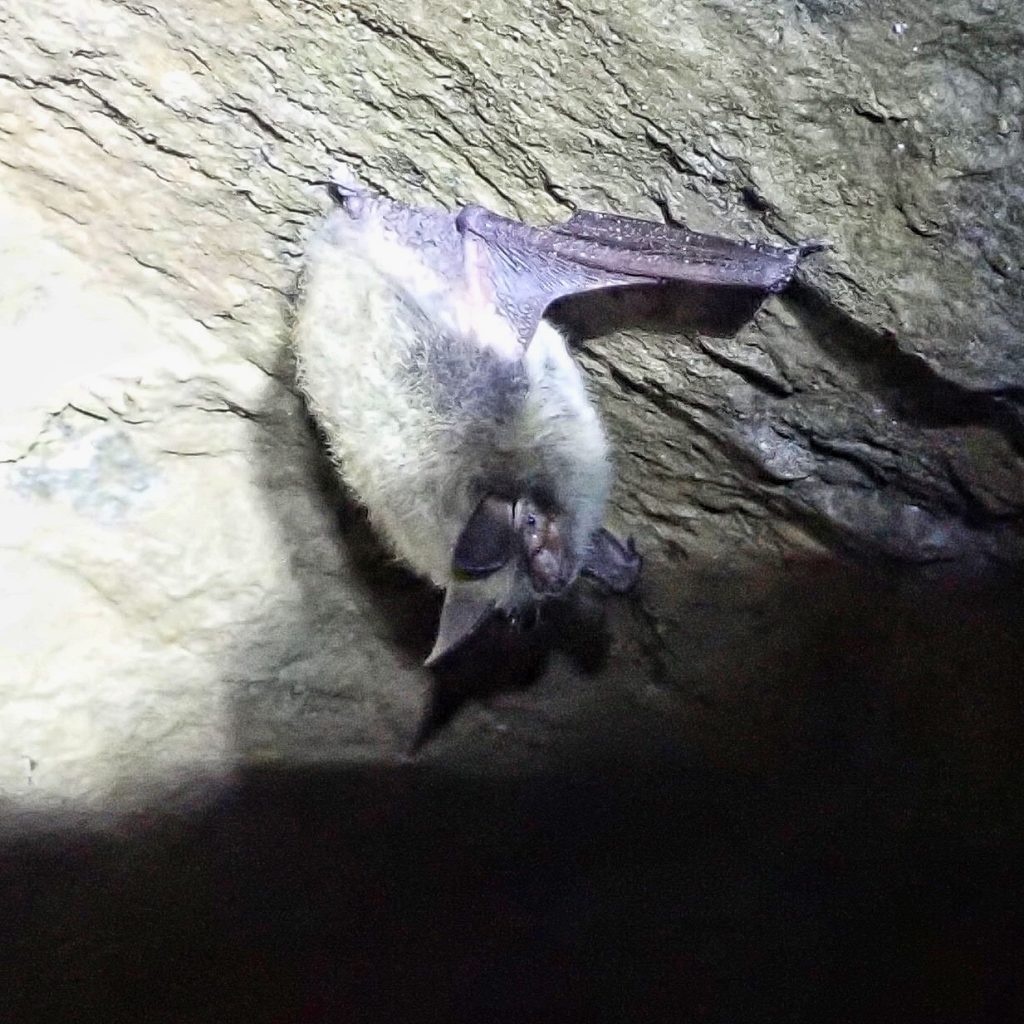
We found our target bugs in almost the same places I’d left them. After more photos we moved deeper into the mine on rocky but level terrain, with frequent shallow puddles of water. Beyond about 20’ from the entrance we no longer found camel crickets, but we did see many harvestmen, some as-yet-unidentified Diptera, several overwintering Scoliopteryx libatrix (Herald Moths), and a snail eating Scaphinotus angusticollis beetle. But the actual high point of the trip, exceeding even the thrill of the Square-legged Camel Crickets, was when my eagle eyed buddy Craig spotted not one but two hibernating Myotis sp. bats (possibly yumanensis). The first one was hanging upside down, in a classic bat pose, from the ceiling of the mine, and the other was wedged into a flaring crack in the wall. I was over the moon about the bats, never having seen a live bat, in the wild, that was not in flight. Unfortunately I was a little too excited and didn’t get the greatest of photos because I failed to readjust the iso to accommodate the additional light from the headlamps.
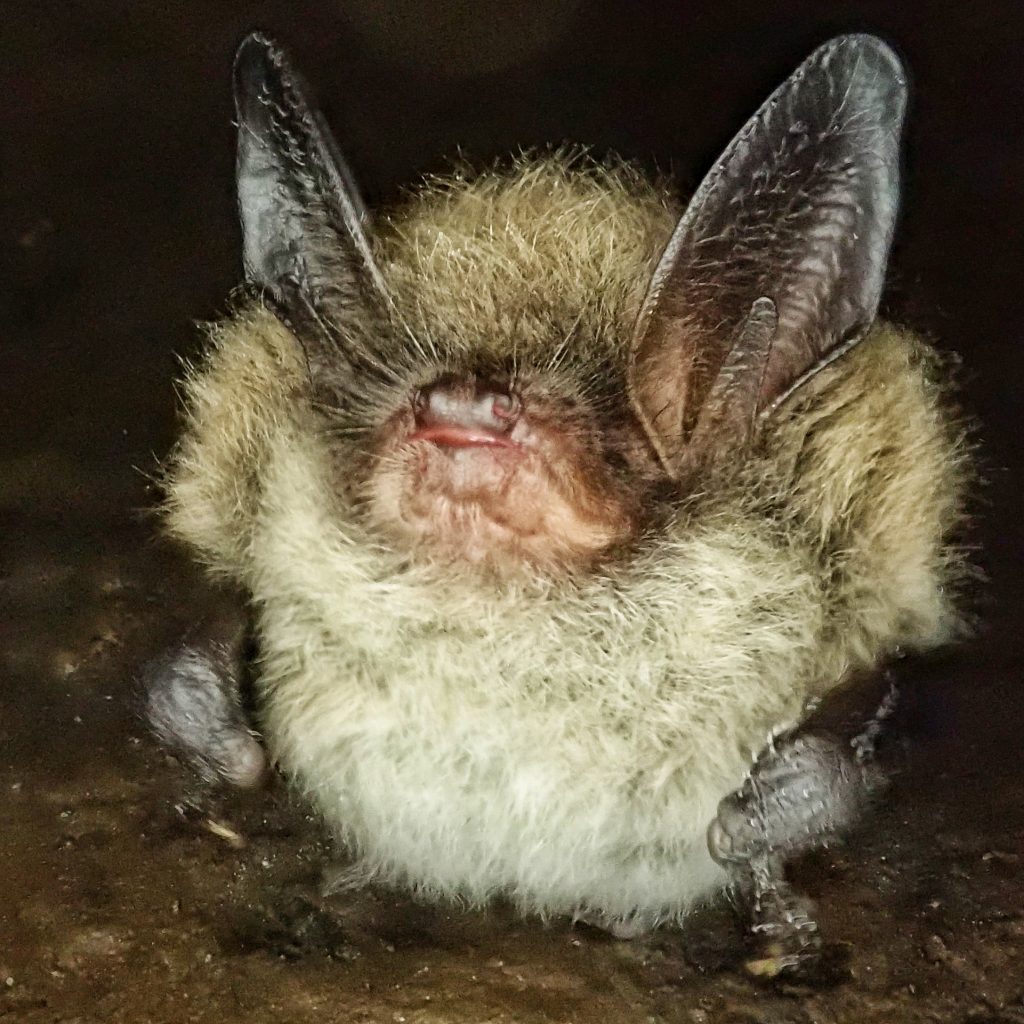
Within an hour we had exhausted the limited possibilities of the shallow mine, and emerged into a day even grayer and wetter than when we’d entered. But, despite a few tactical errors, and some less than aesthetically pleasing evidence of human presence, it was a very productive trip filled with new country and interesting lifeforms. It was the kind of successful shared adventure Craig and I used to have routinely. But at this point in our history the prosaic dramas of everyday life usually get in the way of new editions of our serial joint adventures as recreational naturalists, and I am profoundly grateful for each additional episode.
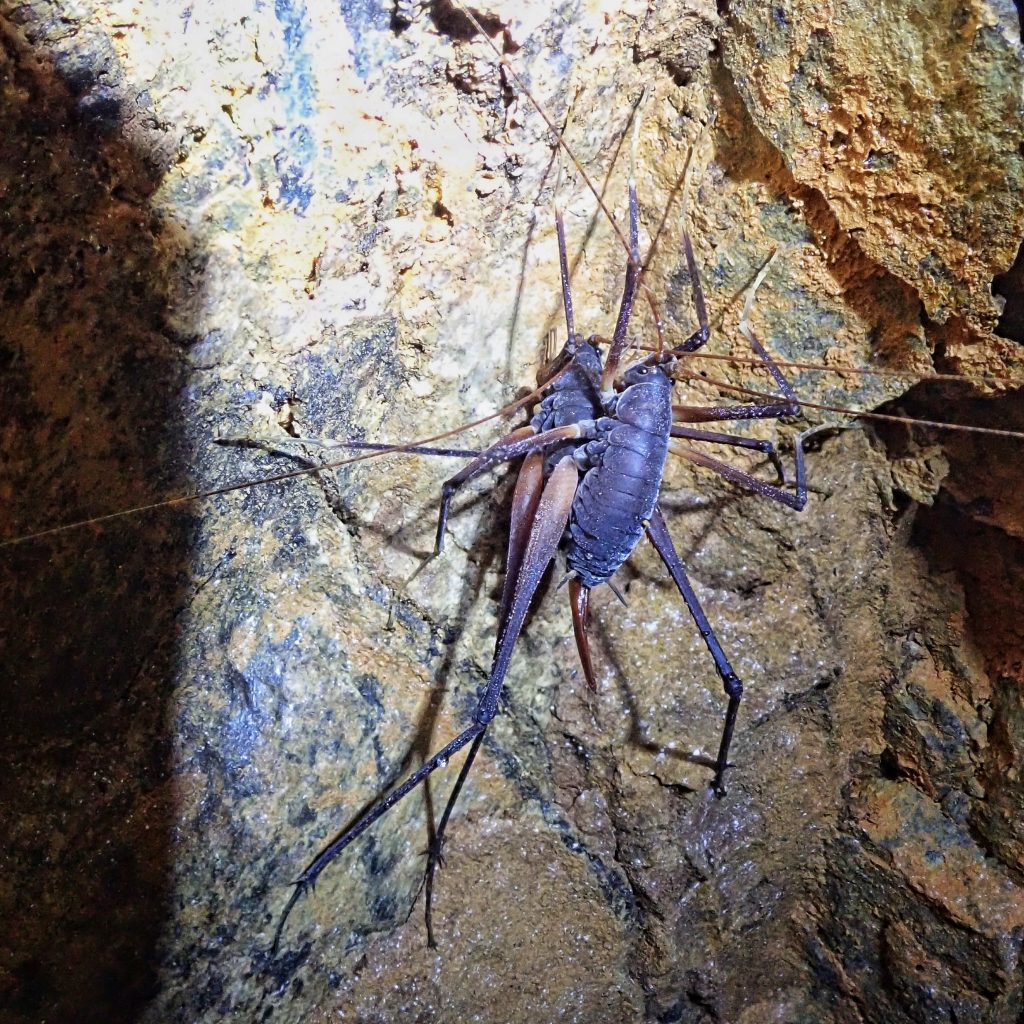
Description-Wingless; Long, square with small spined edges, (rather than rounded) spindly, pale red legs, hind legs more than twice the length of the body with very large femora; antenna at least twice the length of the body; body hunchbacked, brown or reddish brown; clearly visible cerci in both species, and a long, stout ovipositor on females; Body length up to 25mm, legspan up to 20cm.
Similar species– Due to the ratio of legs and antennae to body length, there is nothing on this continent that looks like Tropidischia xanthostoma!
Habitat– Damp, dark areas; in caves and mines, under bridges, and under logs and other debris. Sometimes found indoors in humid basements
Range– West of the Cascade crest.
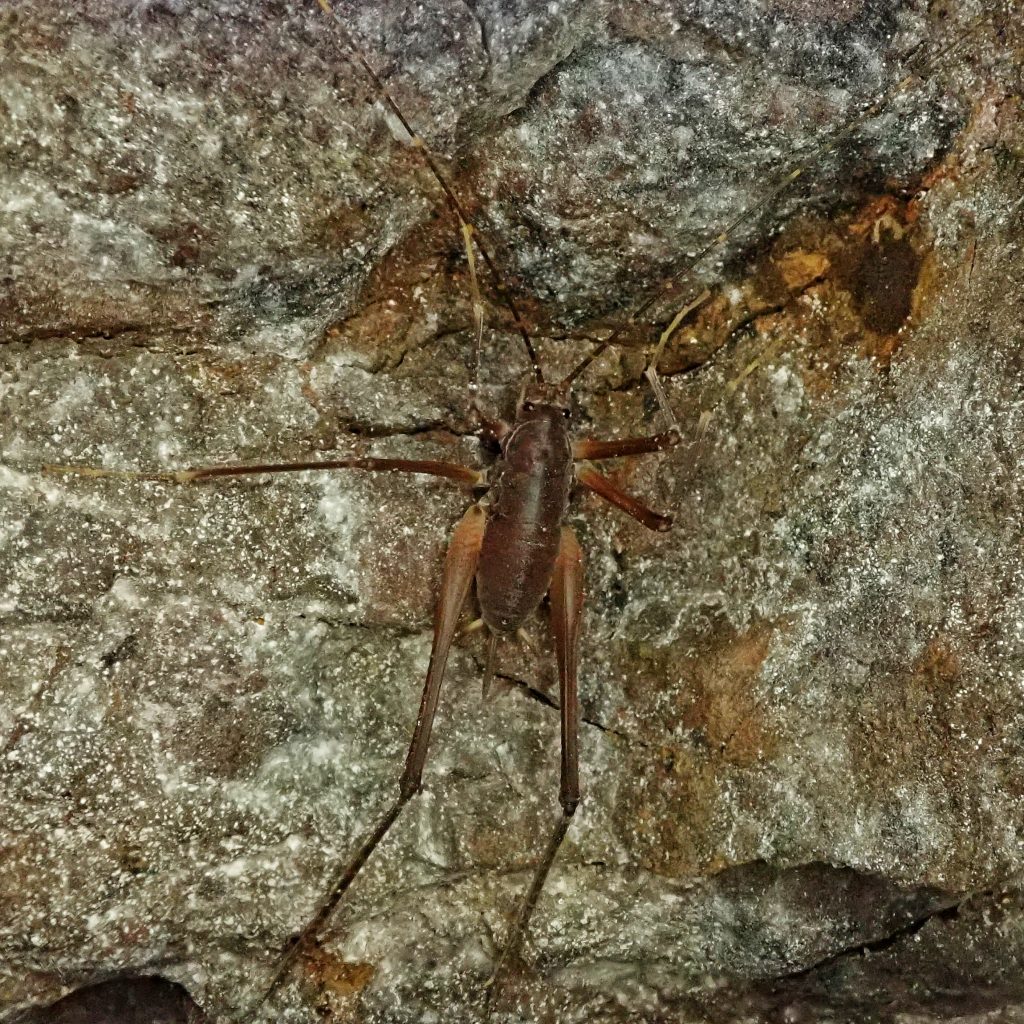
Eats-Fungi, dung, insects, detritus, and vegetation.
Eaten by-Any insectivore large enough to subdue it. Dicamptodon copei (Cope’s Giant Salamander) has been observed eating this species.
Adults active– Year around
Etymology of names– I can not be certain what Tropidischia references. Even in his original description of the genus Scudder doesn’t explain it. But trophi- means keeled in Greek, and -dischia probably either references dischid meaning divided, or dis+chias, two crosses. But I cannot say what that may reference. The epithet xanthostoma means ‘yellow mouth’, and undoubtedly refers to the “…bright, straw yellow…” mouthparts Scudder writes of in the original species description.
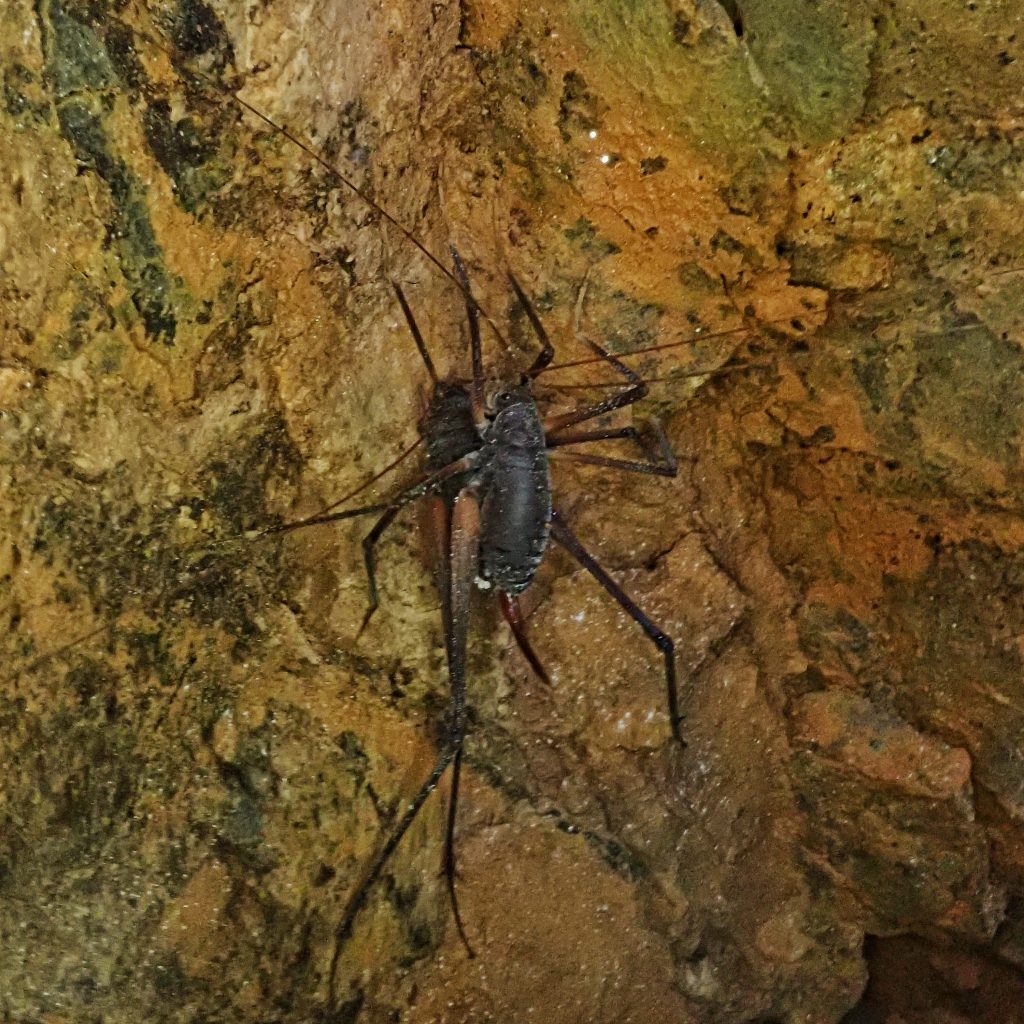
https://thebugchicks.com/articles/education/cool-insects?format=amp
https://ia600201.us.archive.org/11/items/materialsformono00scudrich/materialsformono00scudrich.pdf
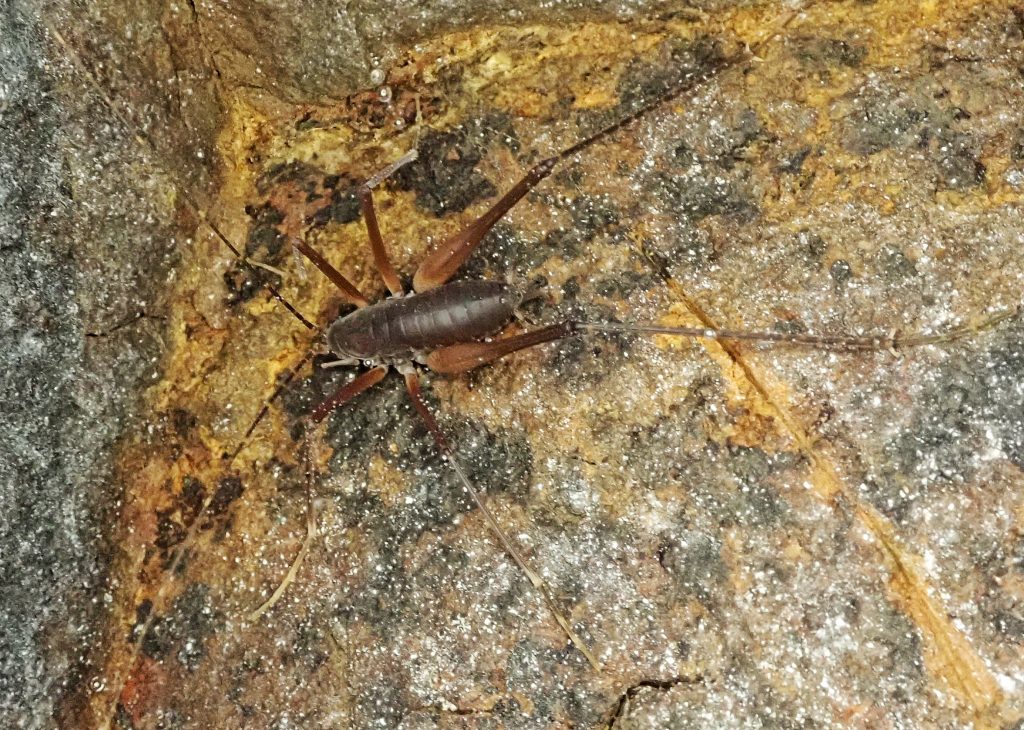
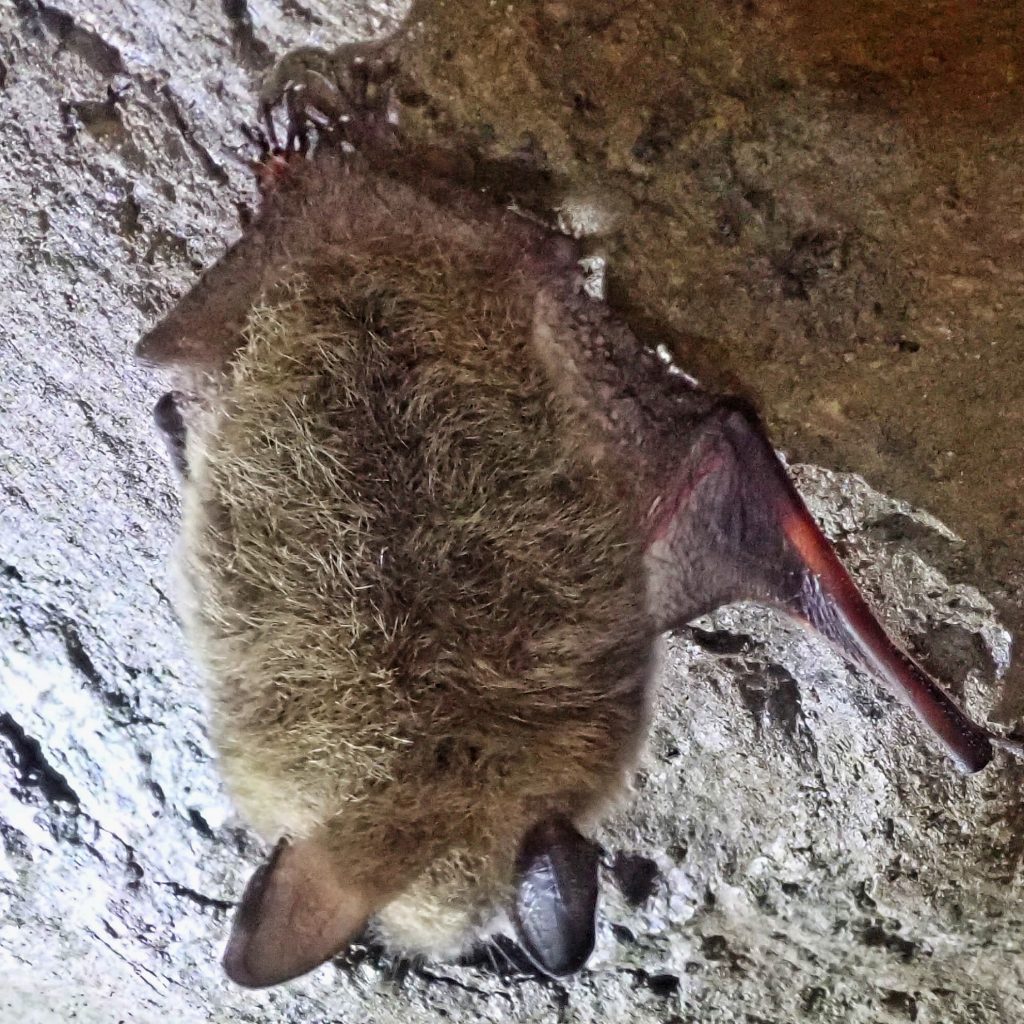
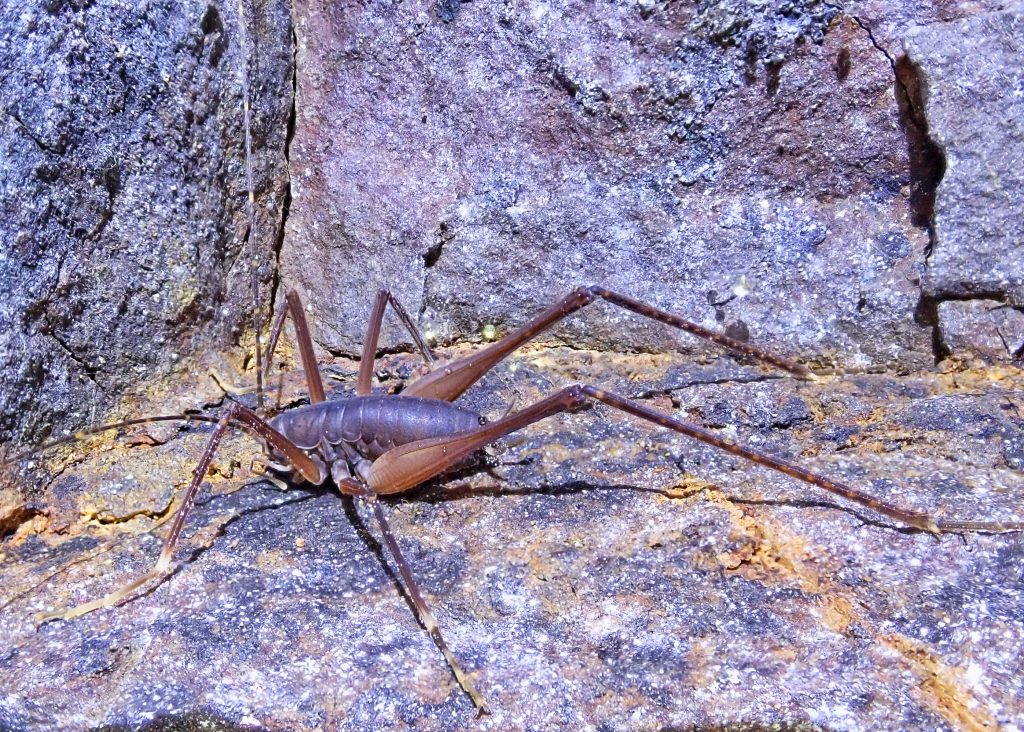
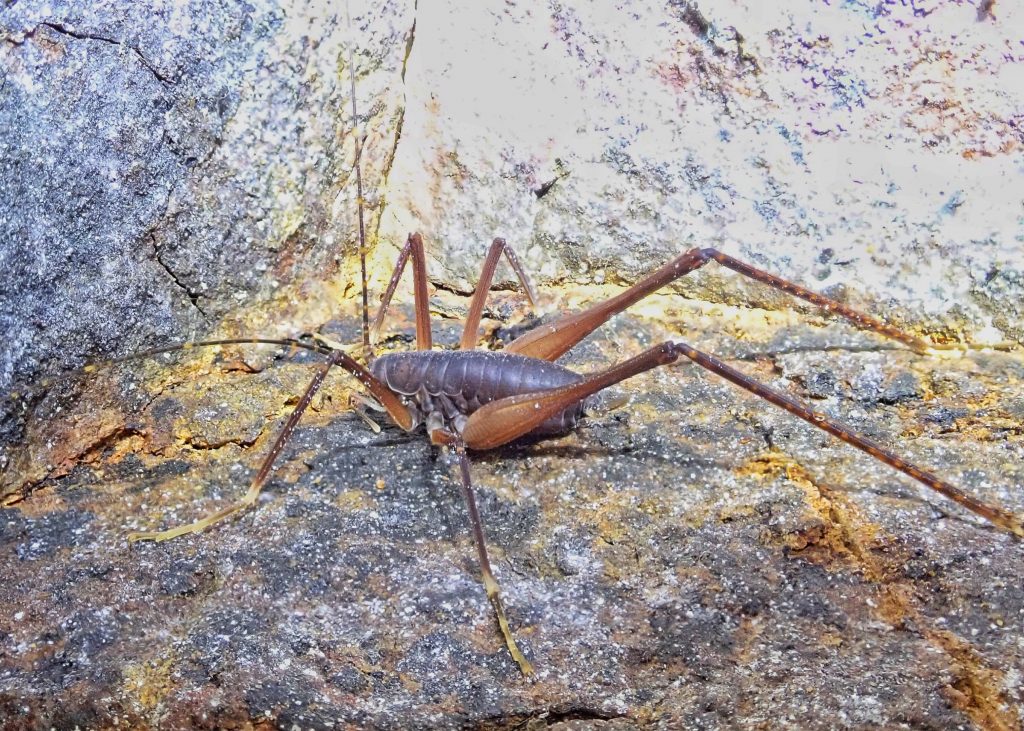
What an adventure! Love the photos of the crickets as well as the bats. Have you read the book The Secret Lives of Bats by Merlin Tuttle? He’s had amazing adventures searching for bats, plus provides lots of info on bats – humorous and well-written.
I have not read that, but I’ll check it out! Thanks!
Really enjoyed your description of your trip! Like going along with you, while being warm & dry at home! 😏
Only place I’ve seen these is at a year-round spring in Columbia County, Oregon, in a forested area of the coast range. They appeared to be feeding on lush moss at the spring. Also at the same spring was a P. giant salamander, poking its head out of a hole in the ground, eyeing me. That fits in to the statement that they feed on these amazing crickets. A relative who used to fish in clear Washington state streams said he used to catch these crickets under logs and used them as bait. I fear that tree farms do not provide the damp cool mossy conditions these insects need. I guess a few may survive in caves and protected parks.
Well Lona, let’s hope it’s much more than a few! Thank you for sharing that with us!
Thank you for a very enjoyable read! Your blog was linked to a discussion in a Field Naturalists of Vancouver Island Facebook group discussion about a cave cricket. Your love of the natural world is an inspiration- I look forward to reading more of your adventures!
Thank you for your kind words and appreciation, Deanne!